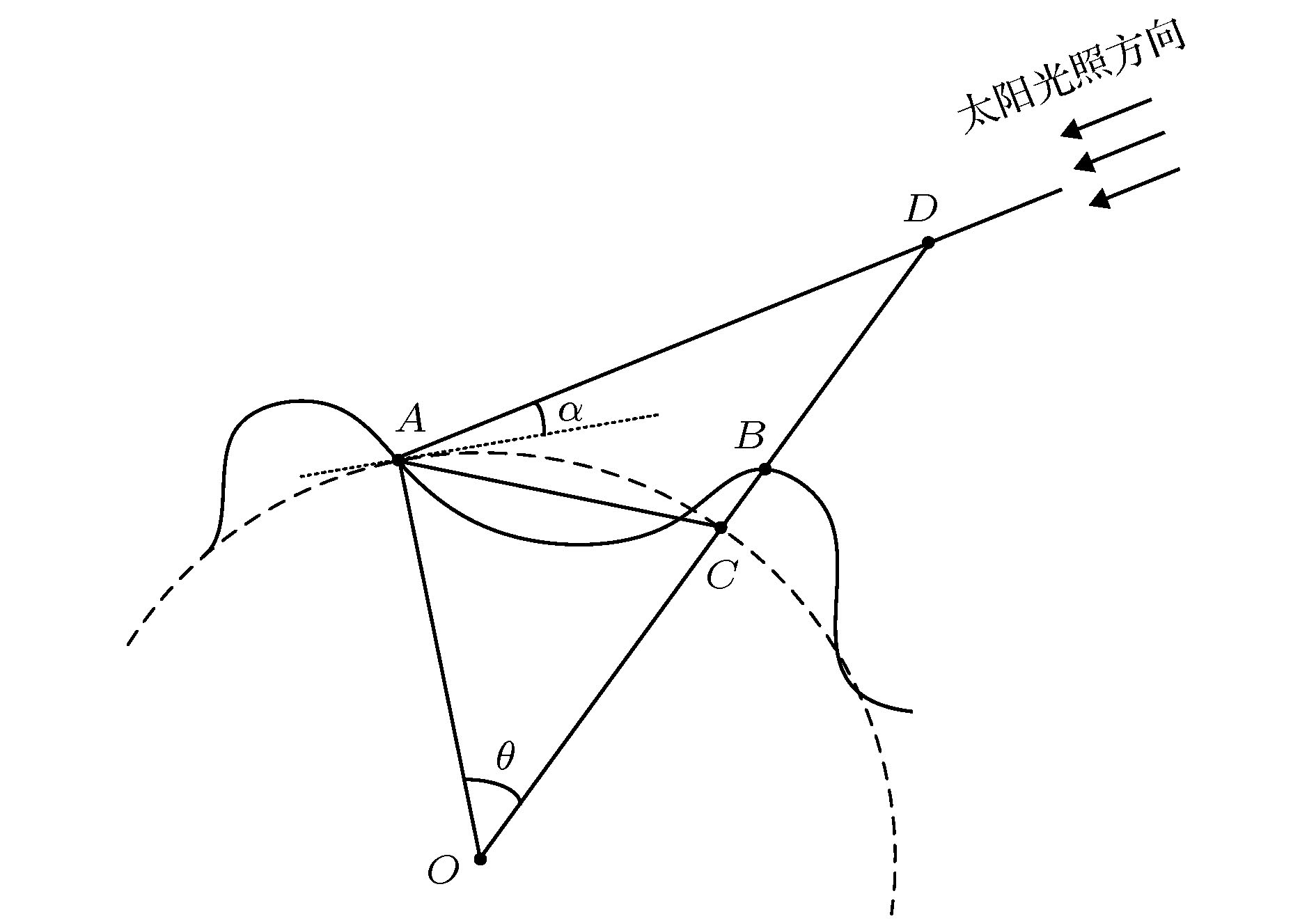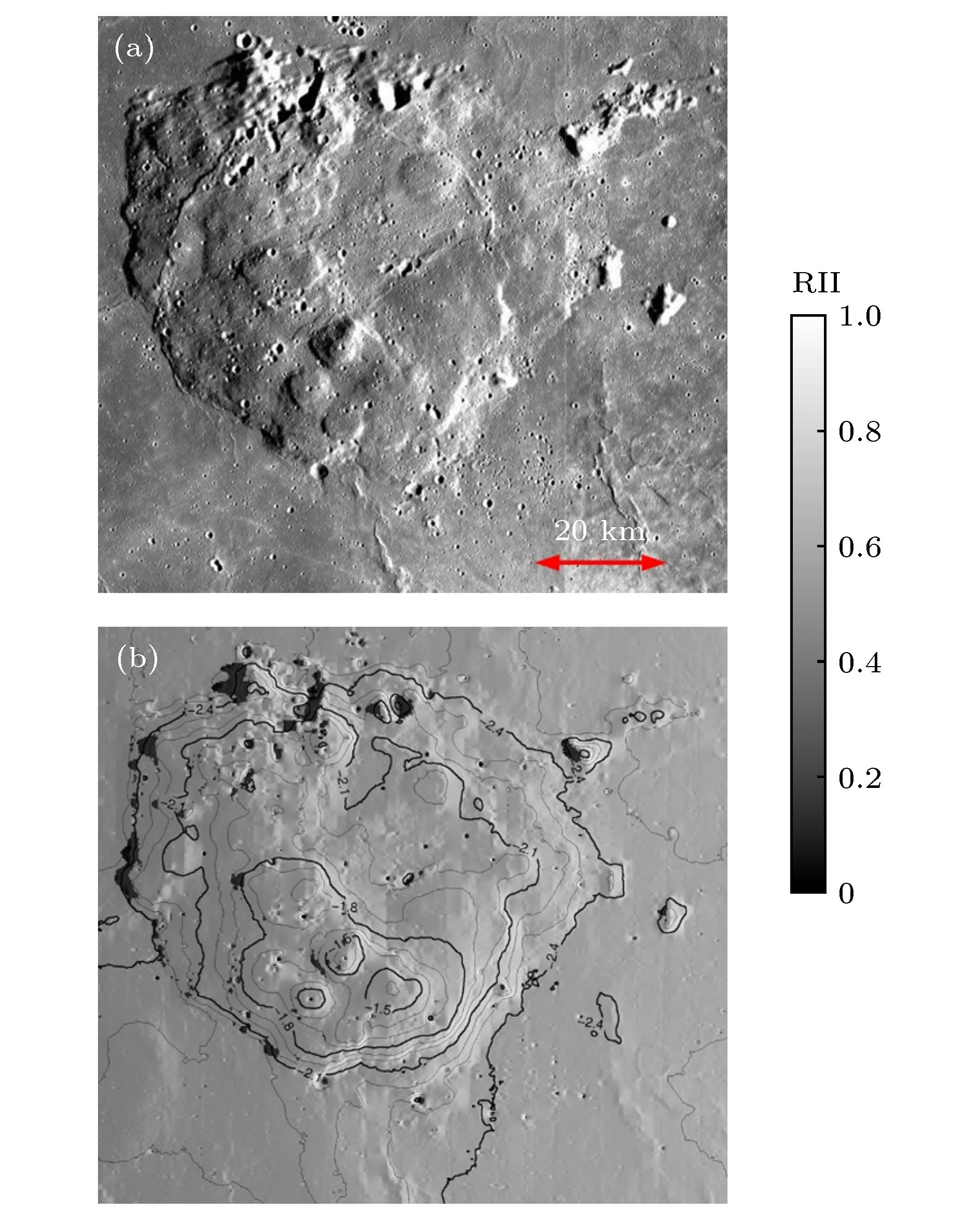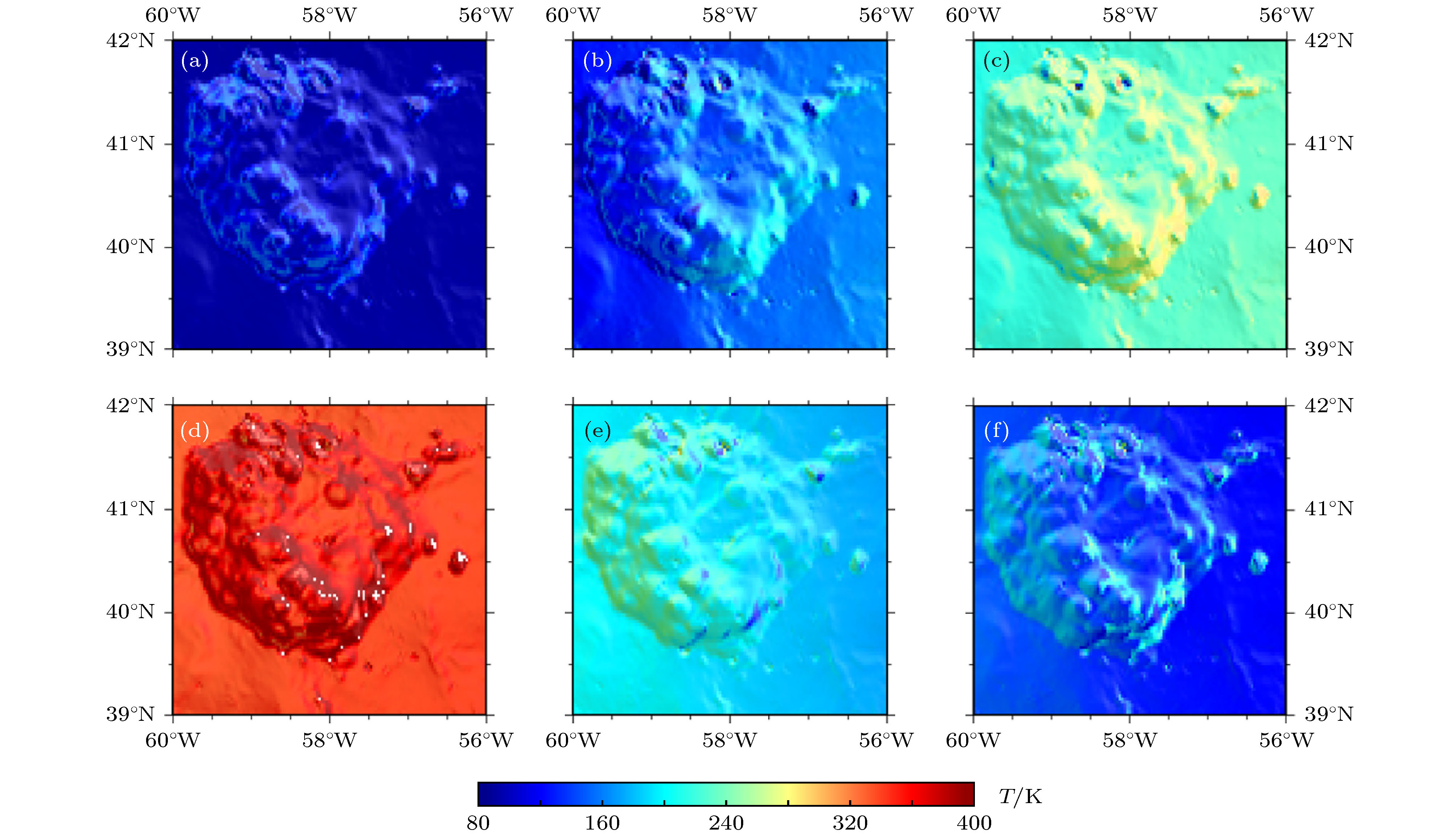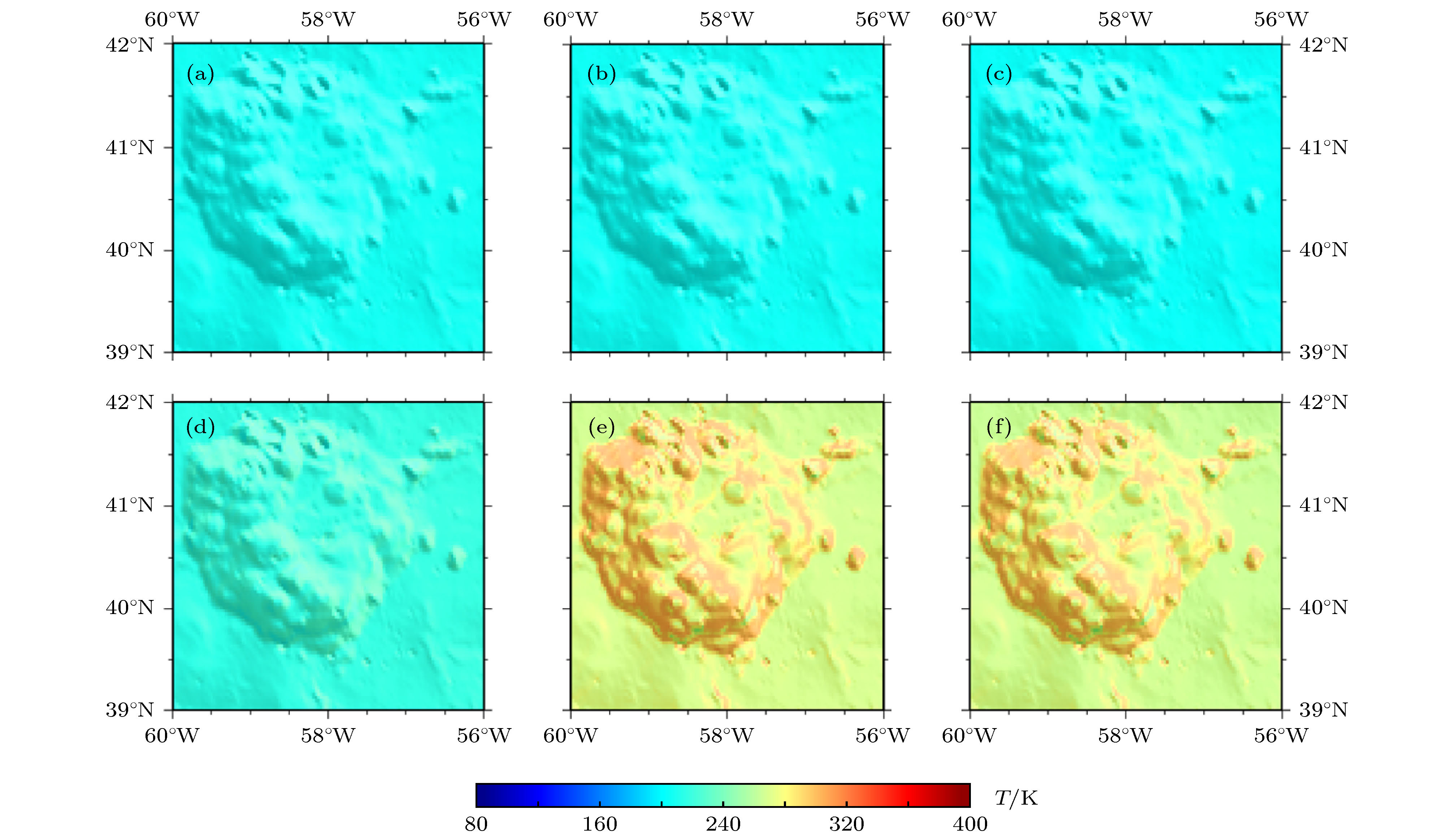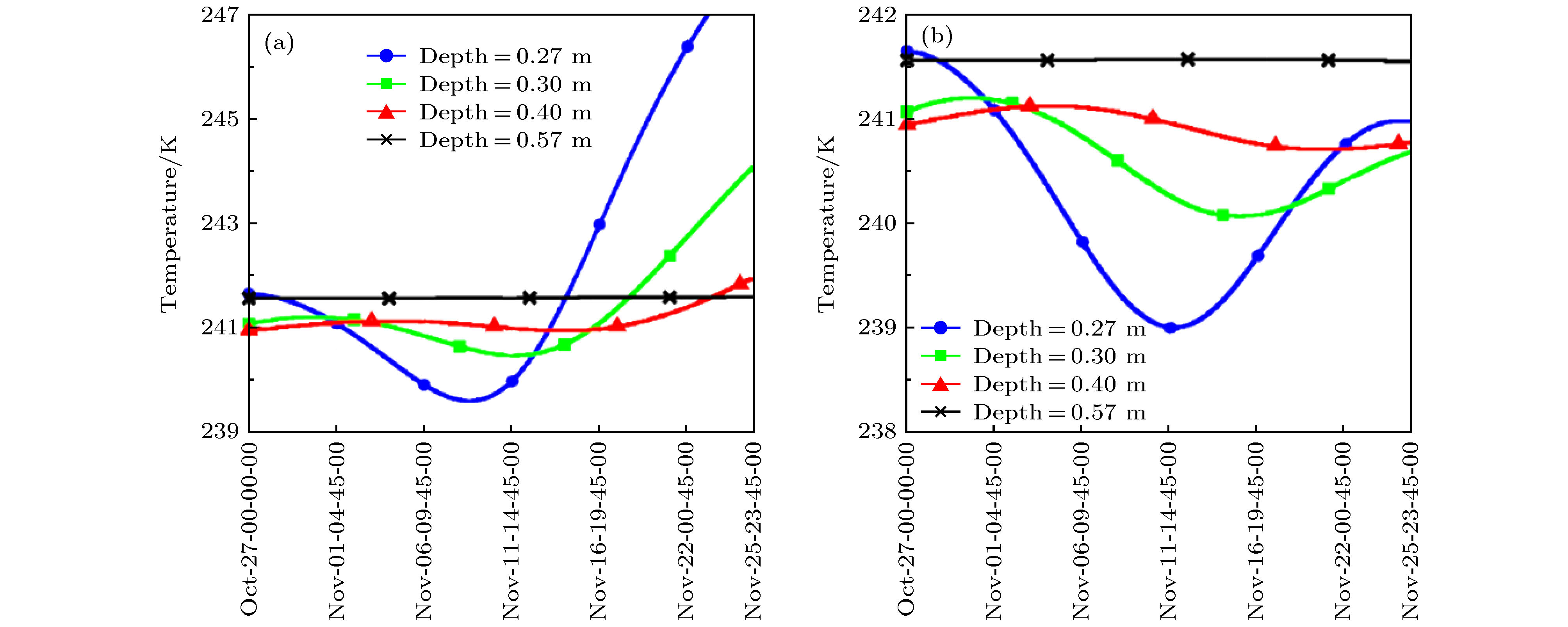-
The forthcoming lunar exploration of Chang’e-5 (CE-5) mission will be the first sampling return project of China. The actual drilling needs the information about real-time illumination and corresponding temperature. To give a support for the project, in this paper the SPICE software system is first used to calculate the real-time illumination at the CE-5 candidate landing site Mons Rümker. It is found that our synthetic map of illumination is consistent with the morning map of illumination provided by the Japan’s SELENE satellite. This result verifies the rationality of our algorithm and the corresponding code. According to the calculated illumination and considering a one-dimensional heat conduction model, we study the temperature distribution over Mons Rümker. It is found that the regolith temperature near the surface is greatly related to the illumination, but varies a little with the depth increasing. It is also discovered that the regolith temperature beneath a depth of 0.57 m will not change any more. To give a support for the actual drilling program, it is recommended to consider the temperature difference between the outside and inside of the regolith, especially their stresses caused by such a temperature difference. Moreover, considering the drilling depth of CE-5 larger than 0.57 m, it is likely to measure the heat flow for the constant-temperature layer. We propose that for the next lunar exploration following CE-5 the measurement of heat flow is considered. This will promote the research of lunar science.
-
Keywords:
- CE-5 /
- Mons Rümker /
- real-time illumination /
- temperature distribution
[1] 欧阳自远, 李春来, 邹永廖等 2010 中国科学·地球科学 40 261
Ouyang Z Y, Li C L, Zou Y L, et al. 2010 Sci. China Earth Sci. 40 261
[2] 于登云, 吴学英, 吴伟仁 2016 深空探测学报 3 307
Yu D Y, Wu X Y, Wu W R 2016 J. Deep Space Explor. 3 307
[3] 赵健楠, 肖龙, 乔乐, Glotch T D, 黄倩 2017 矿物岩石地球化学通报 36 1156
Zhao J N, Xiao L, Qiao L, Glotch T D, Huang Q 2017 Bull. Miner. Petrol. Geochem. 36 1156
[4] Zhang T, Ding X 2017 Acta Astronaut. 131 190
 Google Scholar
Google Scholar
[5] Qian Y Q, Xiao L, Zhao S Y, Huang J, Flahaut J, Martinot M, Head J W, Hiesinger H, Wang G X 2018 J. Geophys. Res. Planet. 123 1407
[6] Geologic map of the Rumker quadrangle of the Moon, Scott D H, Eggleton R E https://pubs.er.usgs.gov/publication/i805/[2020-02-18]
[7] Smith E I 1973 Moon 6 3
 Google Scholar
Google Scholar
[8] Smith E I 1974 Moon 10 175
 Google Scholar
Google Scholar
[9] Spudis P D, McGovern P J, Kiefer W S 2013 J. Geophys. Res. Planet. 118 1063
 Google Scholar
Google Scholar
[10] Zhao J N, Xiao L, Qiao L, Glotch T D, Huang Q 2017 J. Geophys. Res. Planet. 122 1419
 Google Scholar
Google Scholar
[11] Hao W F, Zhu C, Li F, Yan J G, Ye M, Barriot J P 2019 Planet. Space Sci. 168 73
 Google Scholar
Google Scholar
[12] Paige D A, Siegler M A, Zhang J A, et al. 2010 Science 330 479
 Google Scholar
Google Scholar
[13] Vasavada A R, Bandfield J L, Greenhagen B T, Hayne P O, Siegler M A, Williams J P, Paige D A 2012 J. Geophys. Res. 117 E00H18-1
[14] Hayne P O, Bandfield J L, Siegler M A, Vasavada A R, Ghent R R, Williams J P, Greenhagen B T, Aharonson O, Elder C M, Lucey P G, Paige D A 2017 J. Geophys. Res. Planet. 122 2371
 Google Scholar
Google Scholar
[15] Woods-Robinson R, Siegler M A, Paige D A 2019 J. Geophys. Res. Planet. 124 1989
 Google Scholar
Google Scholar
[16] Acton Jr C H A 1996 Planet. Space Sci. 44 65
 Google Scholar
Google Scholar
[17] Smith D E, Zuber M T, Neumann G A, et al. 2010 Geophys. Res. Lett. 37 L18204-1
[18] Smith D E, Zuber M T, Neumann G A, et al. 2017 Icarus 283 70
 Google Scholar
Google Scholar
[19] Mitchell D L, and De Pater I 1994 Icarus 110 2
 Google Scholar
Google Scholar
[20] Ledlow M J, Burns J O, Gisler G R, Zhao J H, Zeilik M, Baker D N 1992 Astrophys. J. 384 640
 Google Scholar
Google Scholar
[21] Hemingway B S, Krupka K M, Robie R A 1981 Am. Mineral. 66 1202
[22] Langseth M G, Keihm S J, Peters K 1976 Proceedings of the 7 th International Symposium on Lunar and Planetary Science Texas, United States of America, March 15–19, 1976 p3143
[23] Bandfield J L, Hayne P O, Williams J P, Greenhagen B T, Paige D A 2015 Icarus 248 357
 Google Scholar
Google Scholar
[24] Keihm S J 1984 Icarus 60 568
 Google Scholar
Google Scholar
[25] Kopp G, Lean J L 2011 Geophys. Res. Lett. 38 541
[26] Braun J E, Mitchell J C 1983 Sol. Energy 31 439
 Google Scholar
Google Scholar
[27] Warren P H, Rasmussen 1987 J. Geophys. Res. Space Phys. 92 3453
 Google Scholar
Google Scholar
-
图 3 Mons Rümker区域早晨光照图, 对应月球地方时tm = 06:30:30 (a)日本SELENE卫星提供的早晨光照图; (b)本文计算的与图3(a)相同时刻的实时光照图
Figure 3. Morning map of illumination over Mons Rümker at the lunar local time tm = 06:30:30: (a) Japan’s SELENE morning map of illumination; (b) our estimated relative intensity of illumination at the same time of Fig. 3(a)
图 4 Mons Rümker区域表面温度分布图 (a)对应时刻为UTC 2020-10-28T 11:30:00; (b)对应时刻为UTC 2020-10-29T 06:45:00; (c)对应时刻为UTC 2020-10-30T 06:45:00; (d)对应时刻为UTC 2020-11-02T 04:45:00; (e)对应时刻为UTC 2020-11-12T 02:45:00; (f)对应时刻为UTC 2020-11-12T 17:00:00
Figure 4. Surface temperature distribution with time over Mons Rümker plateau: (a) Time at UTC 2020-10-28T 11:30:00; (b) time at UTC 2020-10-29T 06:45:00; (c) time at UTC 2020-10-30T 06:45:00; (d) time at UTC 2020-11-02T 04:45:00; (e) time at UTC 2020-11-12T 02:45:00; (f) time at UTC 2020-11-12T 17:00:00
图 5 Mons Rümker区域底部5 cm深度的温度分布图 (a)对应时刻为UTC 2020-10-28T 11:30:00; (b)对应时刻为UTC 2020-10-29T 06:45:00; (c)对应时刻为UTC 2020-10-30T 06:45:00; (d)对应时刻为UTC 2020-11-02T 04:45:00; (e)对应时刻为UTC 2020-11-12T 02:45:00; (f)对应时刻为UTC 2020-11-12T 17:00:00
Figure 5. Subsurface temperature distribution at the depth of 5 cm over Mons Rümker plateau: (a) Time at UTC 2020-10-28T 11:30:00; (b) time at UTC 2020-10-29T 06:45:00; (c) time at UTC 2020-10-30T 06:45:00; (d) time at UTC 2020-11-02T 04:45:00; (e) time at UTC 2020-11-12T 02:45:00; (f) time at UTC 2020-11-12T 17:00:00
图 6 剖面温度沿图1所示经度方向的分布 (a)对应时刻为UTC 2020-10-28T 11:30:00; (b)对应时刻为UTC 2020-10-29T 06:45:00; (c)对应时刻为UTC 2020-10-30T 06:45:00; (d)对应时刻为UTC 2020-11-02T 04:45:00; (e)对应时刻为UTC 2020-11-12T 02:45:00; (f)对应时刻为UTC 2020-11-12T 17:00:00. 图6(d)所示黑色曲线表示图1蓝线方向的表面地形轮廓
Figure 6. Temperature variation along the longitude direction shown in Fig.1: (a) Time at UTC 2020-10-28T 11:30:00; (b) time at UTC 2020-10-29T 06:45:00; (c) time at UTC 2020-10-30T 06:45:00; (d) time at UTC 2020-11-02T 04:45:00; (e) time at UTC 2020-11-12T 02:45:00; (f) time at UTC 2020-11-12T 17:00:00. The black carves in Fig. 6(d) represents the surface topography along the same blue line direction displayed in Fig. 1
图 8 参考点(图1中黑色五角星)温度随深度的变化 (a)对应月球地方时tm = 06:30:30; (b)对应月球地方时tm = 12:30:30; (c)对应月球地方时tm = 18:30:30
Figure 8. Subsurface temperature variations with depth for the point of black star in Fig. 1: (a) Temperature variations at the lunar local time tm = 06:30:30; (b) temperature variations at the lunar local time tm = 12:30:30; (c) temperature variations at the lunar local time tm = 18:30:30
表 1 相关参数取值
Table 1. Values of parameters used in study
序号 参数 取值 1 密度ρs和ρd [14] ρs = 1100 kg·m–3, ρd = 1800 kg·m–3 2 热传导系数ks和kd [14] ks = 7.4 × 10–4 W·m–1·K–1, kd = 3.4 × 10–3 W·m–1·K–1 3 比热容拟合系数[14] c0, c1, c2, c3, c4 c0 = –3.6125 J·kg–1·K–1, c1 = 2.7431 J·kg–1·K–2,
c2 = 2.3616 × 10–3 J·kg–1·K–3,
c3 = –1.234 × 10–5 J·kg–1·K–4,
c4 = 8.9093 × 10–9 J·kg–1·K–54 参数H和x [13,14] H = 0.06 m, x = 2.7 表 2 参考点(图1中黑色五角星)温度(单位为K)在不同时刻随深度的变化
Table 2. Temperature (in K) variations with depth for the point of black star in Fig. 1 at various lunar local time
深度/m tm = 06:30:30 tm = 12:30:30 tm = 18:30:30 H = 0.02 m H = 0.09 m Q = 0.012 W·m–2 Q = 0.021 W·m–2 H = 0.02 m H = 0.09 m Q = 0.012 W·m–2 Q = 0.021 W·m–2 H = 0.02 m H = 0.09 m Q = 0.012 W·m–2 Q = 0.021 W·m–2 0 170.0 169.6 169.7 169.7 348.1 351.7 350.9 350.9 122.3 110.7 112.9 112.9 0.0136 158.5 149.4 152.3 152.3 322.5 325.7 324.4 324.4 213.6 205.6 207.1 207.1 0.0526 192.4 194.5 194.4 194.4 270.6 261.1 263.2 263.2 260.9 260.7 260.1 260.1 0.1000 221.3 223.8 223.2 223.2 237.9 231.9 233.6 233.6 260.3 253.9 255.3 255.3 0.1822 239.3 239.6 239.5 239.5 234.0 235.1 234.7 234.7 243.0 239.5 240.4 240.4 0.3240 241.2 241.2 241.2 241.2 240.8 240.9 240.8 240.8 240.0 240.2 240.1 240.1 0.4721 241.2 241.2 241.2 241.2 241.3 241.3 241.3 241.3 241.2 241.3 241.3 241.3 0.8250 242.4 242.4 242.4 242.4 242.4 242.4 242.4 242.4 242.4 242.4 242.4 242.4 1.0000 242.9 242.9 242.7 243.1 242.9 242.9 242.7 243.1 242.9 242.9 242.7 243.1 -
[1] 欧阳自远, 李春来, 邹永廖等 2010 中国科学·地球科学 40 261
Ouyang Z Y, Li C L, Zou Y L, et al. 2010 Sci. China Earth Sci. 40 261
[2] 于登云, 吴学英, 吴伟仁 2016 深空探测学报 3 307
Yu D Y, Wu X Y, Wu W R 2016 J. Deep Space Explor. 3 307
[3] 赵健楠, 肖龙, 乔乐, Glotch T D, 黄倩 2017 矿物岩石地球化学通报 36 1156
Zhao J N, Xiao L, Qiao L, Glotch T D, Huang Q 2017 Bull. Miner. Petrol. Geochem. 36 1156
[4] Zhang T, Ding X 2017 Acta Astronaut. 131 190
 Google Scholar
Google Scholar
[5] Qian Y Q, Xiao L, Zhao S Y, Huang J, Flahaut J, Martinot M, Head J W, Hiesinger H, Wang G X 2018 J. Geophys. Res. Planet. 123 1407
[6] Geologic map of the Rumker quadrangle of the Moon, Scott D H, Eggleton R E https://pubs.er.usgs.gov/publication/i805/[2020-02-18]
[7] Smith E I 1973 Moon 6 3
 Google Scholar
Google Scholar
[8] Smith E I 1974 Moon 10 175
 Google Scholar
Google Scholar
[9] Spudis P D, McGovern P J, Kiefer W S 2013 J. Geophys. Res. Planet. 118 1063
 Google Scholar
Google Scholar
[10] Zhao J N, Xiao L, Qiao L, Glotch T D, Huang Q 2017 J. Geophys. Res. Planet. 122 1419
 Google Scholar
Google Scholar
[11] Hao W F, Zhu C, Li F, Yan J G, Ye M, Barriot J P 2019 Planet. Space Sci. 168 73
 Google Scholar
Google Scholar
[12] Paige D A, Siegler M A, Zhang J A, et al. 2010 Science 330 479
 Google Scholar
Google Scholar
[13] Vasavada A R, Bandfield J L, Greenhagen B T, Hayne P O, Siegler M A, Williams J P, Paige D A 2012 J. Geophys. Res. 117 E00H18-1
[14] Hayne P O, Bandfield J L, Siegler M A, Vasavada A R, Ghent R R, Williams J P, Greenhagen B T, Aharonson O, Elder C M, Lucey P G, Paige D A 2017 J. Geophys. Res. Planet. 122 2371
 Google Scholar
Google Scholar
[15] Woods-Robinson R, Siegler M A, Paige D A 2019 J. Geophys. Res. Planet. 124 1989
 Google Scholar
Google Scholar
[16] Acton Jr C H A 1996 Planet. Space Sci. 44 65
 Google Scholar
Google Scholar
[17] Smith D E, Zuber M T, Neumann G A, et al. 2010 Geophys. Res. Lett. 37 L18204-1
[18] Smith D E, Zuber M T, Neumann G A, et al. 2017 Icarus 283 70
 Google Scholar
Google Scholar
[19] Mitchell D L, and De Pater I 1994 Icarus 110 2
 Google Scholar
Google Scholar
[20] Ledlow M J, Burns J O, Gisler G R, Zhao J H, Zeilik M, Baker D N 1992 Astrophys. J. 384 640
 Google Scholar
Google Scholar
[21] Hemingway B S, Krupka K M, Robie R A 1981 Am. Mineral. 66 1202
[22] Langseth M G, Keihm S J, Peters K 1976 Proceedings of the 7 th International Symposium on Lunar and Planetary Science Texas, United States of America, March 15–19, 1976 p3143
[23] Bandfield J L, Hayne P O, Williams J P, Greenhagen B T, Paige D A 2015 Icarus 248 357
 Google Scholar
Google Scholar
[24] Keihm S J 1984 Icarus 60 568
 Google Scholar
Google Scholar
[25] Kopp G, Lean J L 2011 Geophys. Res. Lett. 38 541
[26] Braun J E, Mitchell J C 1983 Sol. Energy 31 439
 Google Scholar
Google Scholar
[27] Warren P H, Rasmussen 1987 J. Geophys. Res. Space Phys. 92 3453
 Google Scholar
Google Scholar
Catalog
Metrics
- Abstract views: 10374
- PDF Downloads: 106
- Cited By: 0














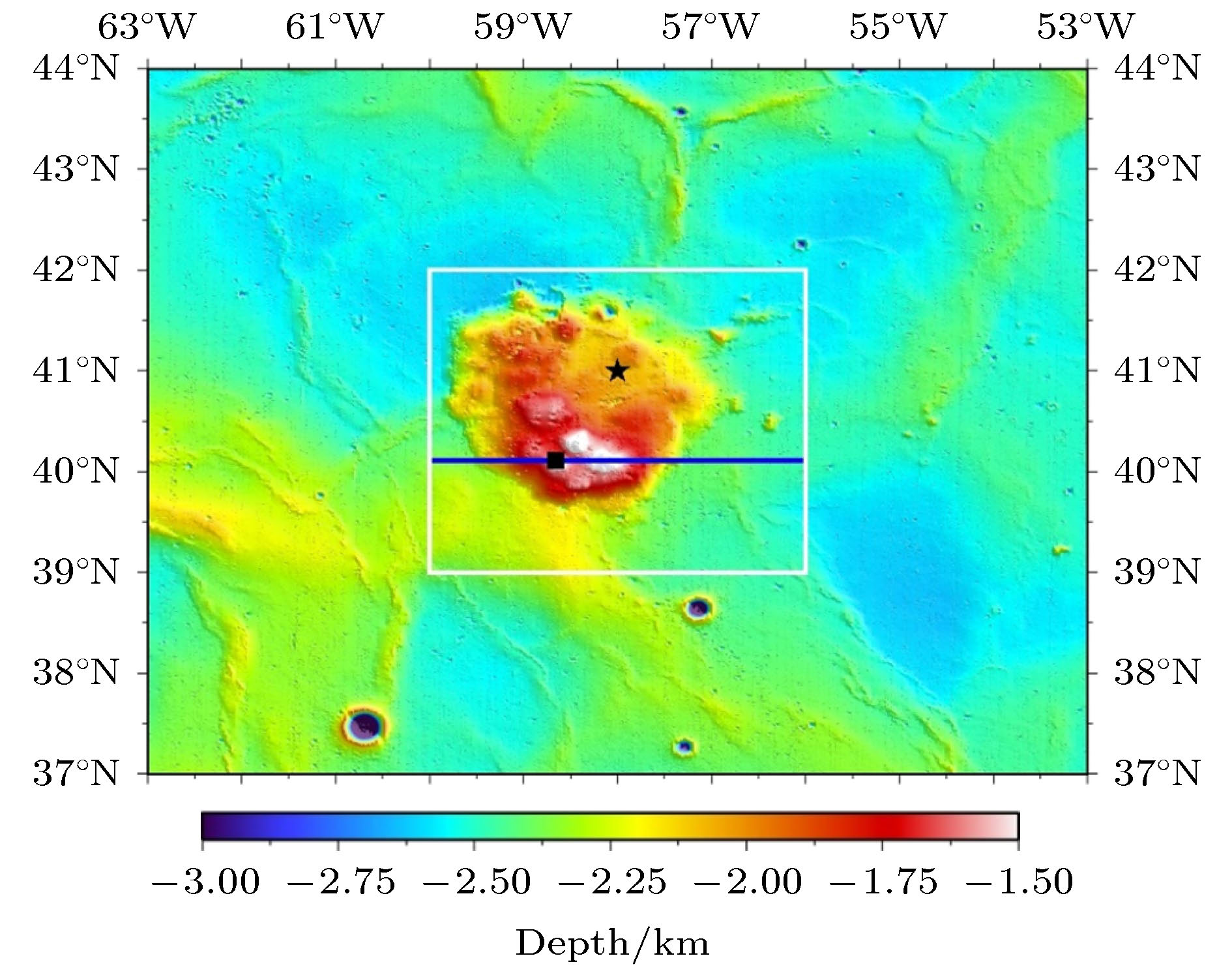
 DownLoad:
DownLoad:
